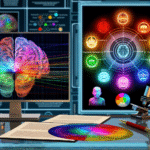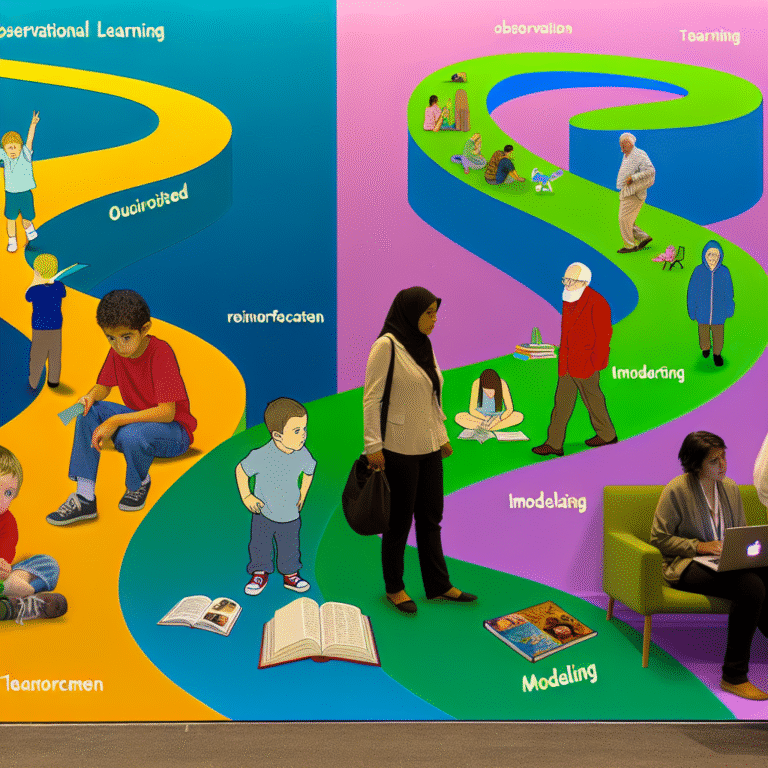
Introduction
In a world filled with lies, half-truths, and deception, the ability to detect dishonesty can be a powerful tool. Whether in psychological evaluations, criminal investigations, or everyday interactions, understanding how to decipher truth from falsehood is essential. Decoding Deception: The Forensic Psychologist’s Ultimate Guide to Detecting Lies serves as a comprehensive resource for anyone interested in the intricate art and science of lie detection. With intriguing insights rooted in psychological principles and real-world applications, this article aims to unravel the complexities of deception and equip readers with the knowledge to navigate it effectively.
The Psychology of Deception
What Drives People to Lie?
Understanding the motivations behind deceit is crucial. People lie for various reasons, including avoiding consequences, protecting others, or even enhancing their self-image. Some common motivations include:
- Fear: Fear of punishment or rejection can drive individuals to lie.
- Gain: Whether it’s financial or social, the prospect of gaining something often tempts people to fabricate stories.
- Protection: Individuals may think that lying can shield their loved ones from hurtful truths.
The Science Behind Lying
Research indicates that lying activates different areas in the brain compared to telling the truth. Neuroimaging studies reveal that the act of lying requires more cognitive resources, engaging areas associated with decision-making and conflict resolution. Thus, the subtle cues displayed by liars often arise from the mental effort required to maintain their false narratives.
Techniques for Detecting Lies
Non-Verbal Cues
Micro-expressions
Micro-expressions are fleeting facial expressions that reveal genuine emotions not aligned with the spoken words. They last just a fraction of a second and can provide essential clues. For instance, if someone smiles while discussing a tragic event, it might indicate insincerity.
| Emotion | Typical Micro-expression | Potential Deception Indicator |
|---|---|---|
| Happiness | Brief smile, then neutral | Insincere joy |
| Sadness | Frown combined with averted eyes | Avoidance of truth |
| Surprise | Raised eyebrows, wide eyes | Possible fabrication or shock |
Body Language
Liars often exhibit incongruities in body language. They might avoid eye contact or exhibit closed-off body positions, such as crossed arms. Recognizing these signs can be pivotal in lie detection.
Verbal Indicators
The language used can also provide telltale signs of deception. Here are some things to listen for:
- Vagueness: Liars often provide limited details to avoid being caught in contradictions.
- Inconsistencies: Changing stories or facts can reveal deceptive intent.
- Over-Formalization: Excessively formal language may indicate an effort to create distance from the lie.
Case Studies
Case Study 1: The Enron Scandal
The collapse of Enron was one of the largest corporate fraud cases in American history. Executives lied about the company’s financial health, leading to devastating consequences for investors and employees. This case exemplifies how corporate deception can disguise serious wrongdoing and highlights the importance of forensic psychology in uncovering the truth behind such grand lies.
Analysis
This case illustrates systemic deception on a large scale. Investigators employed various psychological methods to decode the lies propagated by executives, reinforcing the need for effective lie detection in corporate environments.
Case Study 2: The Amanda Knox Trial
Amanda Knox’s trial for the murder of Meredith Kercher brought significant media attention and divided public opinion. Knox’s shifting statements raised suspicions among investigators and the public alike. Forensic psychologists analyzed her behavior and statements, exploring the fine line between truth and deception.
Analysis
Knox’s case shows how personal emotions and social dynamics can complicate the perception of truth. Forensic psychological analysis can better discern genuine emotions from potential deception, offering critical insights in legal contexts.
Practical Applications
In Law Enforcement
Forensic psychologists play a vital role in criminal investigations. Utilizing techniques from Decoding Deception: The Forensic Psychologist’s Guide to Detecting Lies, they help ensure that interviews are conducted efficiently, gathering truthful information while identifying deception.
In Social Interactions
Understanding the principles of deception can enhance everyday relationships. By recognizing the signs of lying, individuals can foster more truthful interactions in both personal and professional contexts.
In Therapy
For therapists, detecting deception can be crucial for patient honesty, especially when clients withhold information that affects their treatment. Employing the techniques from this guide can help create a more open and trusting therapeutic environment.
Summary of Key Techniques
- Observe Non-Verbal Cues: Micro-expressions and body language provide essential insights into honesty.
- Listen for Verbal Indicators: Pay attention to vagueness, inconsistencies, and over-formalized language.
- Utilize Psychological Analysis: Professional training in forensic psychology can reveal hidden truths.
Actionable Insights
- Practice Active Listening: This will enhance your ability to detect cues of deception.
- Observe Contextual Responses: Context plays a significant role in interpreting signals of honesty or deceit.
- Utilize Resources: Further reading and training in forensic psychology can bolster your detection skills.
Conclusion
Decoding Deception: The Forensic Psychologist’s Ultimate Guide to Detecting Lies emphasizes the profound importance of understanding human behavior. By mastering lie detection techniques, individuals can navigate complex social interactions, enhance their investigative skills, and build more authentic relationships. Whether personally or professionally, fostering an awareness of deception can be invaluable in fostering trust and integrity in communication.
FAQs
1. What are some common signs of lying?
Common signs of lying include avoiding eye contact, inconsistent stories, and nervous body language. Micro-expressions may also reveal true emotions contrary to spoken words.
2. Can training improve lie detection skills?
Yes! Training programs in forensic psychology can enhance your ability to recognize and interpret cues of deception in various contexts.
3. Are there specific techniques to detect lies in interviews?
Techniques such as establishing a baseline of truthful behavior, using open-ended questions, and observing body language can be effective in interviews.
4. How does cultural background influence deception detection?
Cultural norms can significantly affect how individuals express emotions and respond to questioning; being aware of these differences is crucial in lie detection.
5. Is relying on intuition enough to detect lies?
While intuition can play a role, it’s essential to combine it with systematic techniques and knowledge to enhance the accuracy of lie detection.
By implementing the insights from Decoding Deception: The Forensic Psychologist’s Ultimate Guide to Detecting Lies, readers can empower themselves in both their personal and professional lives, enhancing their ability to navigate a world filled with complexities of human interaction.















